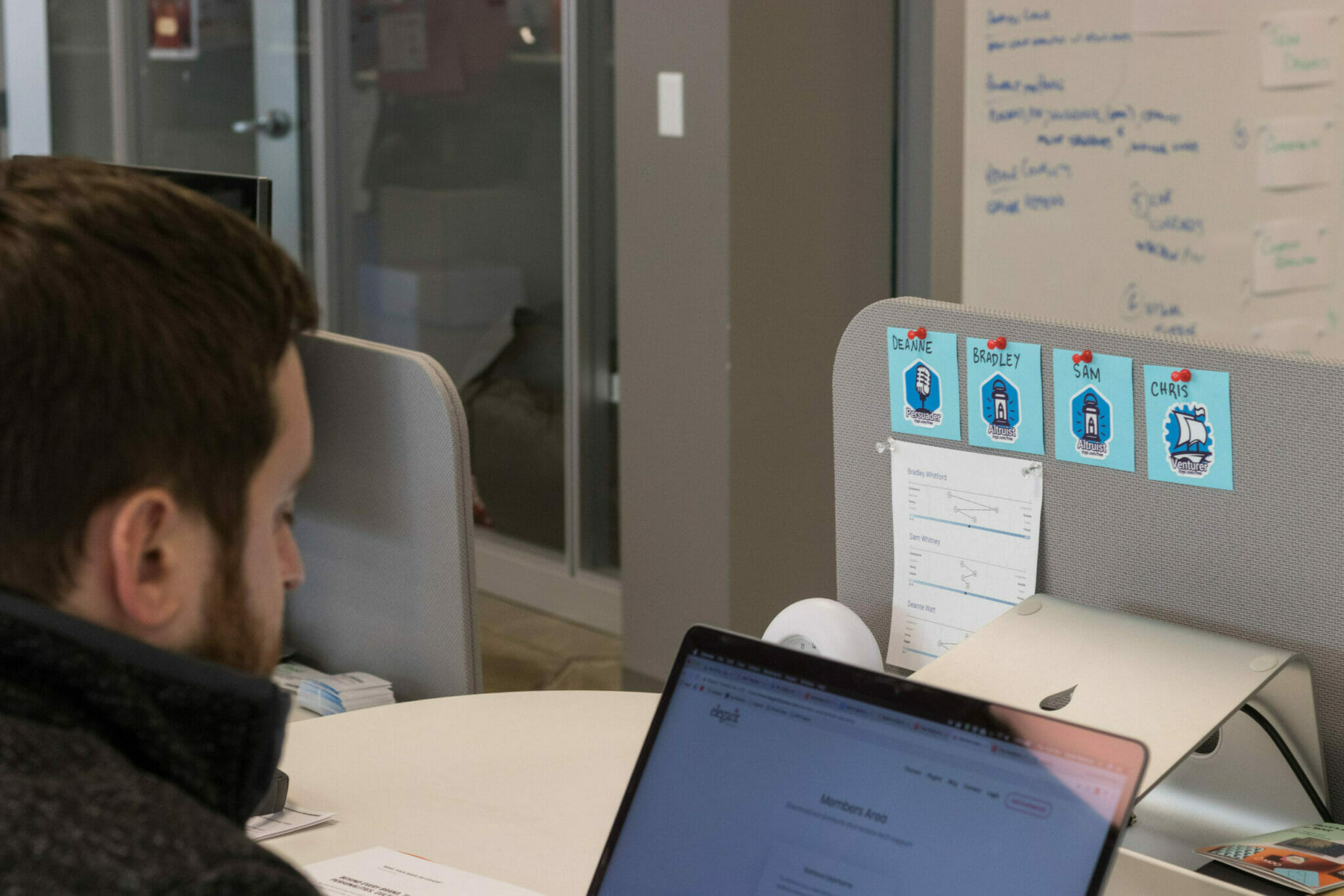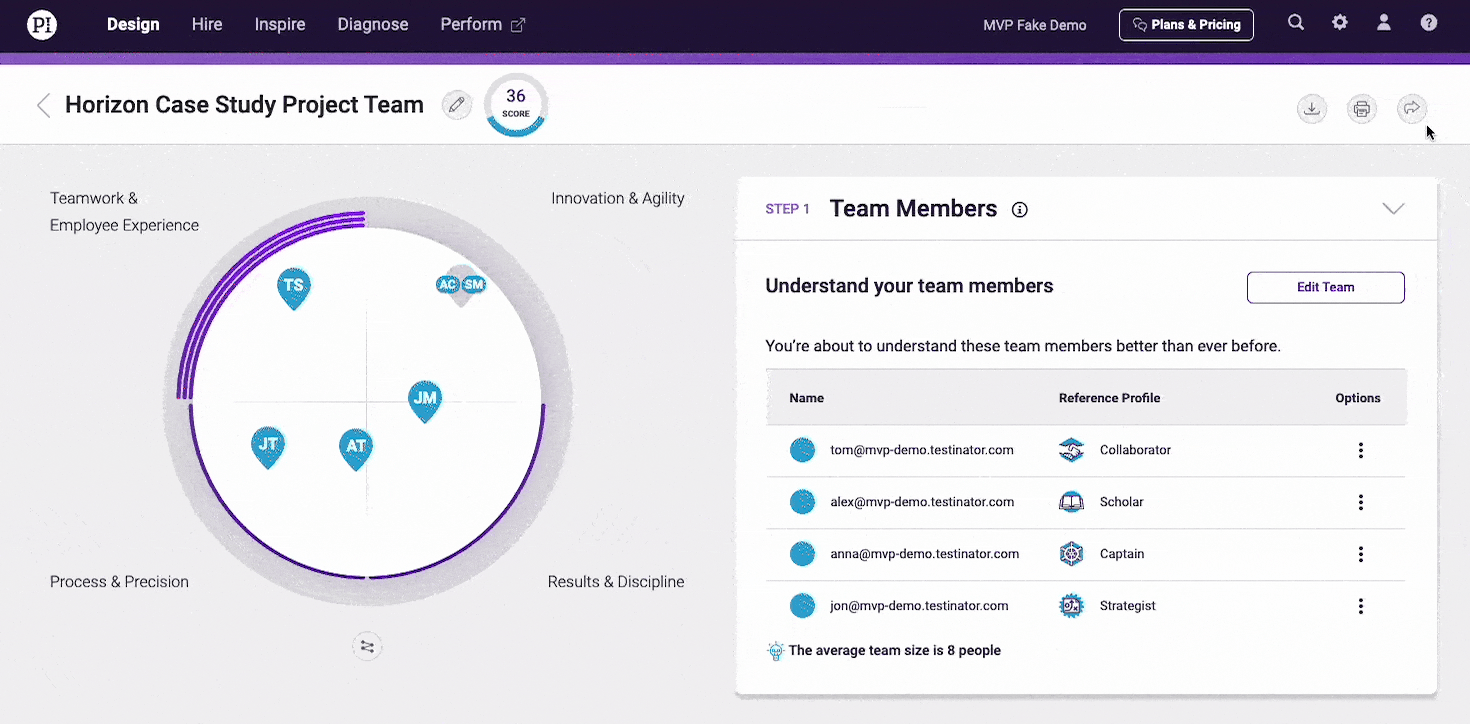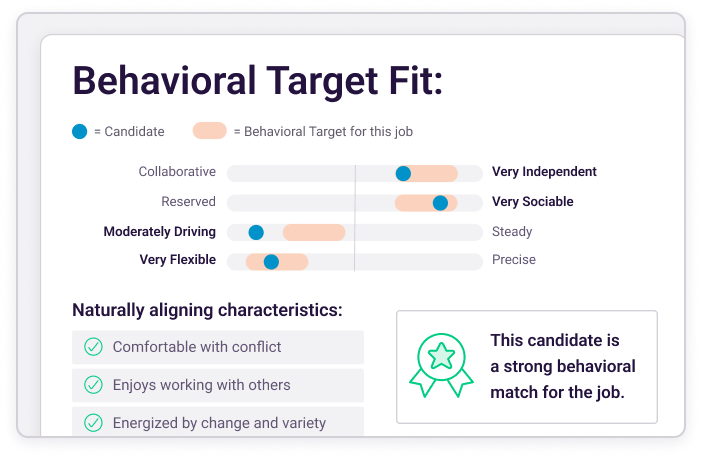Investing in leadership development might seem like a “nice to have” non-essential. But your business could be leaving serious value on the table by ignoring it. And HR leaders with an eye toward long-term progress should be pushing for it to be a priority.
In fact, one study found that organizations that implement leadership training can see as much as a 25% increase in key performance metrics like productivity and profitability—a compelling case for putting leadership growth at the center of your strategic planning.
Below, we’ll take a closer look at:
- What leadership development plans are, and why they matter
- How to create a plan tailored to your team’s goals
- How to track and refine your approach over time
Learn more:
- How to build leadership capacity at your company
- How to develop leaders at every level, including individual contributors
What are leadership development plans?
A leadership development plan provides a framework for guiding an employee along the path to a leadership role. It ensures this personal growth aligns with organizational needs, ensuring employees are prepared to—when the time comes—step into such a position.
The purpose of these plans is pretty straightforward: to strengthen your talent pipeline and ensure business continuity by cultivating leadership capabilities at every level. This can be especially critical during times of change or competitive pressure.
Of course, leadership development plans aren’t just for managers or executives—they can mentor employees at all stages of their career. By fostering leadership competencies early, organizations can build a culture of growth and innovation while cultivating the next generation of leaders.
Done right, a leadership development plan delivers measurable benefits to both individuals and the organization.
A personalized leadership approach for each team member.
PI’s behavioral insights help leaders inspire and coach each employee in a way they truly connect with.
Common leadership skills
Effective leadership is built on a foundation of both interpersonal and technical skills, enabling leaders to inspire their teams—and achieve results.
- Communication: Clear and effective communication helps leaders articulate goals, provide constructive feedback, and foster trust within their teams.
- Decision-making: Strong leaders have the skills and confidence to make informed decisions—even under pressure.
- Emotional intelligence: The ability to recognize and manage emotions—both one’s own and others—is a hallmark of any effective leader.
- Adaptability: Leaders who embrace change and adjust strategies as needed can help their teams thrive in dynamic environments.
- Strategic thinking: Seeing the big picture and aligning team efforts with long-term organizational goals is essential.
Leadership development programs can reinforce these skills through tailored training, mentorship opportunities, and other hands-on experiences—empowering individuals to lead effectively at every level.
Learn more:
- Crafting leaders: A dive into essential leadership skills
- 10 key management skills that elevate great managers
- 10 key skills for cross-functional team leadership
- Essential soft skills for effective leaders
Creating an effective leadership development action plan
Developing a leadership development plan is relatively intuitive, though each stage is important:
Assess your leadership development goals.
The first step in creating a leadership development plan is to evaluate where your organization stands today and identify what it needs to achieve its goals. This means understanding key business priorities, assessing leadership gaps, and determining who within your organization would benefit most from development opportunities.
Consider your future leadership needs—are you preparing employees for management roles or helping current leaders sharpen specific skills like communication or adaptability? Tools—like The PI Behavioral Assessment—can also provide valuable insights into individual strengths and growth areas.
Finally, what do “good leaders” look like in your organization? You’ll want a clear sense of that before proceeding to your next step.
Related: Conducting a training needs analysis for leaders
Create your plan.
After assessing your needs, design a leadership development plan that connects individual or group goals with specific learning opportunities. Start by mapping your objectives—whether it’s preparing new leaders, refining specific skills, or addressing broader organizational gaps—and matching them to achievable development strategies.
Define what the learning experience will look like. Options might include internal programs, external training sessions, or online courses. For example, you could implement one-on-one coaching, group workshops, or self-paced modules.
Finally, ensure there’s a clear point of contact for participants—someone they can turn to for guidance or support as they navigate the program. With a structured plan in place, your team will be equipped to take the next steps toward impactful leadership growth.
Launch your plan.
Start by clearly communicating the plan to your employees, outlining its purpose, goals, and what participants can expect. This can help set the tone while ensuring everyone understands the value of their involvement.
Set a realistic timeline for launching and executing the plan, including key milestones. Be transparent about how the plan will unfold so participants can prepare and engage effectively.
Providing clarity, structure, and ongoing support during this stage is crucial to making the leadership development plan successful and impactful.

Measure your results.
Finally, measuring the effectiveness of your leadership development plan is crucial to ensure it meets organizational goals and fosters individual growth.
Here, you can utilize a combination of qualitative and quantitative analysis to gauge success.
- Quantitative data might include performance metrics, employee retention rates, and productivity levels.
- Qualitative insights can be gathered through feedback surveys, self-assessments, and 360-degree evaluations, offering a comprehensive view of leadership behaviors and their effects.
Regularly review this data to identify trends and areas for improvement. By systematically measuring results, you can demonstrate the value of leadership development initiatives and make informed decisions for future programs.
Finally, identify any opportunities for continuous learning or future goal-setting.
How The Predictive Index can help
Leadership development is a complex process, but it doesn’t have to be overwhelming.
At The Predictive Index, we provide tools and resources to make your leadership development plans both effective and efficient. For example, our Behavioral Assessment helps organizations identify leadership potential and understand individual strengths, ensuring that development plans are tailored to each participant.
We also offer comprehensive leadership training programs, designed to equip managers with the skills they need to lead confidently and effectively. These programs provide actionable insights and practical strategies for navigating today’s challenges while preparing for the future.








